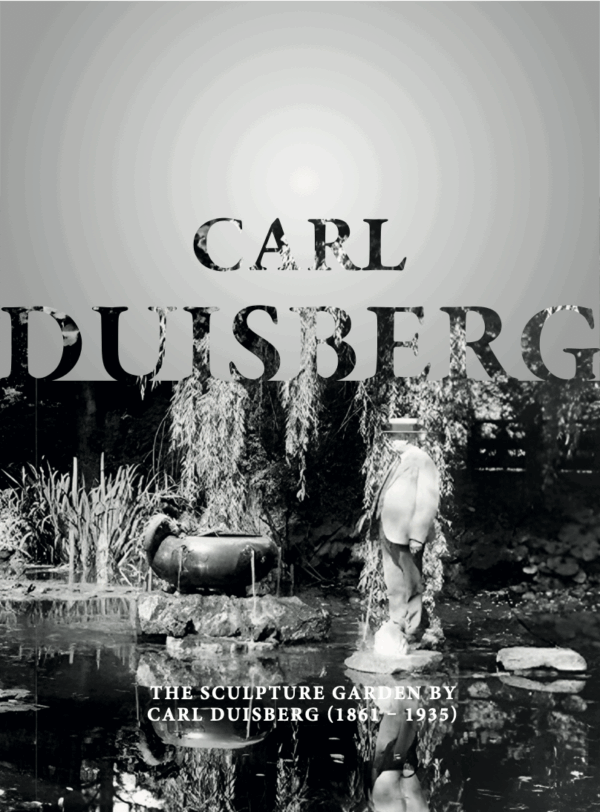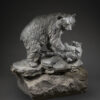Part of Dr Carl Duisberg’s Garden collection exhibition catalogue. Visit our publications page for further details .
Naturalistically cast, the large bear, presumably the mother bear, stands on a rock-like pedestal and leans down towards the smaller bear, which lies on its back and playfully raises a paw. The depiction appears very lively and captures a loving or protective interaction between the two animals.
Provenance : Acquired by Bayer from Bernheimer by Carl Duisberg prior to 1930 –
Condition report :
Partial age damage and surface change due to many years of presentation in the park . Mounted to heavy stone base
Literature :
The word for bear in Japanese is (kuma). Two species of bear are native to Japan: The Asiatic black bear (Ursus thibetanus) and the Hokkaido brown bear (Ursus arctos yesoensis). While the bear does not play a major symbolic role in mainstream Japanese culture and is rarely a central motif in fine or applied arts, it holds deep significance in the folklore and traditions of the Ainu, the Indigenous people of northern Japan. In Ainu culture, the bear was revered as a sacred creature and often associated with mountain deities. It was believed to possess spiritual power and was honoured through ritual hunts and the iomante ceremony, in which a bear cub was raised with care and then ceremonially sent back to the spirit world. This practice reflected both the Ainu’s dependence on the bear for survival and their spiritual reverence for it. Although bears are not commonly represented in classical Japanese art, their presence in Ainu tradition highlights the regional diversity of symbolic animal meanings within Japan. In modern contexts, the bear may sometimes symbolize strength or wilderness, but its cultural weight remains strongest in the northern regions and among Ainu heritage.
Approximate sizes :
Length : 31.5” 80 cm ( Bronze only )
Height : 21 ¼” 54 cm
Free UK Delivery and a certificate of authenticity , overseas buyers please ask for a shipping quote.




